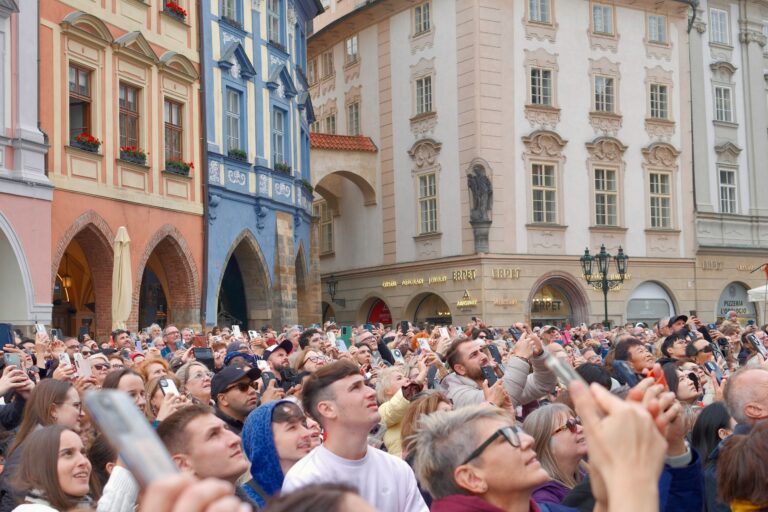Rethinking Digital Nomadism
Digital nomadism is emerging as a significant and influential segment within global tourism. These location-independent professionals blend work and travel, often staying in destinations for weeks or months rather than just days. Their presence is prompting destinations to rethink traditional tourism models, focusing on long-term infrastructure, community integration, and supportive policies that cater to the needs of this mobile, high-value audience.
Miloš Pelucha, co-founder of Destinova, shares insights from his years of living and working as a digital nomad. He reflects on a common oversight among many destinations:
“A lot of places want digital nomads, but they don't truly understand who they are or what they need. It’s not just about giving them a visa; it’s about building a community and an ecosystem where they can thrive.”
His experience highlights the importance of moving beyond surface-level incentives to genuine engagement with nomad communities.
Defining a New Travel Segment
Digital nomadism is not merely a trend; it is a growing lifestyle movement with lasting implications for the tourism sector. While remote work allows many people to travel, not all remote workers identify as digital nomads. True nomads integrate mobility into their lives, choosing long-term travel and temporary residency over fixed home bases. For tourism planners, it is crucial to differentiate between digital nomads and temporary remote workers to develop targeted services, messaging, and policy frameworks.
Community-Led Spaces and Destination Strategy
Digital nomads seek more than just fast Wi-Fi and pleasant weather; they are drawn to destinations that foster connection, creativity, and a sense of purpose. In response, forward-thinking destinations are moving beyond traditional marketing and infrastructure to build community-oriented ecosystems. These ecosystems include co-living and co-working spaces, local events, professional networking opportunities, and seamless integration with local services.
“You can’t build a digital nomad community by just offering good internet. You need people on the ground who understand the lifestyle and can connect the dots,”
as Miloš Pelucha mentioned in Episode 14 of the High Yield Tourism. By collaborating with local businesses, municipalities, and private partners, destinations can offer authentic experiences that encourage longer stays and deeper engagement.
Events and Gatherings as Ecosystem Builders
Festivals, conferences, and retreats designed for remote workers and nomads have become valuable tools for destination development. Events like the Bansko Nomad Fest in Bulgaria demonstrate the power of community-led programming in enhancing a destination’s profile among nomads. These gatherings offer opportunities for peer learning, business collaboration, and cultural exchange, fostering a sense of identity and loyalty among visitors that extends beyond traditional tourism. As Pelucha noted during the episode, “Events are powerful because they let people find their tribe. Once they feel connected, they stay longer, return, or even invest locally.”
Unlocking Economic Value and Bridging Policy Gaps
Digital nomads can significantly contribute to local economies, often spending more per day than leisure tourists while staying longer and supporting year-round businesses. They help balance seasonality, support local service providers, and bring diverse skills into the community. However, many destinations still lack clear policies or interdepartmental cooperation to attract and accommodate this segment effectively.
Pelucha emphasizes the necessity for strategic action: “Destinations need to stop treating digital nomads like backpackers or short-term tourists. We’re often entrepreneurs, remote professionals, and long-term contributors.” Bridging the gap between tourism, economic development, and immigration policy is essential for capturing the full value of digital nomadism.
Digital Nomad Visas: From Buzzwords to Benefits
Over 50 countries have introduced digital nomad visas, but the effectiveness of these programs varies widely. Often, they are designed more as PR tools than as functional pathways. For a visa to be meaningful, it must address real nomad needs, such as reasonable income thresholds, tax clarity, access to healthcare, and opportunities for local integration. Destinations that invest in visa programs aligned with broader ecosystem strategies will be better positioned to attract long-term, high-value mobile professionals.
Why This Matters for High-Yield Tourism
- Strategic segmentation: Recognizing the differences between nomads and remote workers enables more targeted destination marketing.
- Economic diversification: Digital nomads can contribute high-value spending year-round, helping destinations move beyond seasonal tourism cycles.
- Ecosystem thinking: Creating infrastructure for nomads—such as community spaces, visa support, and connectivity—can enhance local economies and promote sustainable growth in tourism.
Case Studies
Portugal – Digital Nomad Village, Madeira
The “Digital Nomads Madeira Islands” program launched a dedicated Digital Nomad Village in Ponta do Sol, in collaboration with local businesses, remote work advocates, and regional tourism authorities.
What They Did:
- Provided free co-working spaces and high-speed internet
- Organized community events and offered local integration support
- Promoted Madeira as a global remote work destination
Impact:
- Over 6,000 digital nomads arrived in the first year
- Revitalized the economy of a quiet rural village
- Positioned Madeira as a top destination for remote work
Indonesia – Buleleng Remote Work Zones (Bali)
Indonesia is developing “digital nomad zones” in lesser-known areas like Buleleng, aiming to distribute tourism more evenly across the island.
What They Did:
- Promoting cultural immersion and environmental sustainability
- Upgrading infrastructure (including internet, co-living spaces, and transport)
- Easing visa access to encourage long-term stays
Impact:
- Supports rural development by shifting nomads away from saturated areas like Canggu
- Encourages deeper engagement and longer visits
Estonia – e-Residency & Digital Nomad Visa
Estonia became a pioneer with its e-Residency program (2014) and later introduced a Digital Nomad Visa (2020), integrating digital nomads into the national economy.
What They Did:
- Enabled foreign entrepreneurs to run EU-based businesses online
- Developed robust digital infrastructure (including ID, banking, and taxation)
- Created legal pathways for remote professionals
Impact:
- Attracted thousands of remote entrepreneurs and freelancers
- Established Estonia as a leader in digital governance
Mexico – Local Nomad Hubs in Oaxaca & Mexico City
Instead of state-led programs, digital nomad ecosystems in Oaxaca and Mexico City have emerged organically.
What’s Happening:
- Local cafés and businesses host remote work meetups and events
- Co-living spaces collaborate with guides, teachers, and artisans
- Peer-led community building is growing without formal infrastructure
Impact:
- Encourages genuine cultural exchange
- Creates sustainable, locally embedded tourism ecosystems
Additional Resources
- High-Yield Tourism Podcast: Episode 14 – It's Time to Rethink Digital Nomadism & Global Mobility
- Digital Nomad Lifestyle - Digital Nomads in Numbers: Key Statistics and Insights for 2024
- The Guardian - ‘My mind was shrieking: “What am I doing?”’ – when the digital nomad dream turns sour
- Keevee - 51 Digital Nomad Statistics for 2025
- Nomad Magazine - Inside the Digital Nomad Economy: Trends, Tools, and Opportunities in 2025
🎧 Tune in to the High-Yield Tourism Podcast for expert insights and real-world case studies.
👉 Browse Episodes
Photos by Matheus de Souza, Julia Solonina, Aron Visuals,
Sercan Faiz, and Jorge Fernández Salas on Unsplash
more insights

The AI Divide in Tourism: How Big Data Is Leaving Small Operators Behind
The AI Divide in Tourism: How Big Data Is Leaving Small Operators Behind Artificial intelligence (AI) and big data are transforming the tourism industry. From

Introducing The Strength-based Strategy Framework To Drive High-Yield Tourism
Introducing The Strength-based Strategy Framework To Drive High-Yield Tourism How an Adapted Business Model Is Revolutionizing Destination Planning: From Volume to Value soar /sɔː/verb: achieving

Beyond Boom and Bust: Rethinking Tourism Policy for Sustainable Growth
Beyond Boom and Bust: Rethinking Tourism Policy for Sustainable Growth Tourism is often hailed as a key driver of economic growth, cultural exchange, and local
High-Yield Tourism
68 Circular Road #02-01
Singapore 049422
Email: hello@highyieldtourism.com
Sign-up to receive updates about High-Yield Tourism, industry news, and reports.
